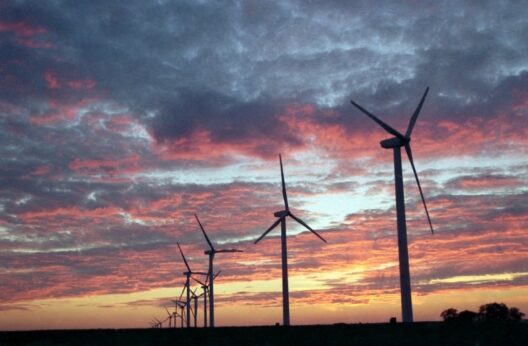The Law of Conservation of Energy is a pivotal concept in both physics and everyday life, fundamentally asserting that energy cannot be created or destroyed—only transformed from one form to another. This principle serves as a cornerstone in various scientific disciplines and plays a crucial role in understanding the dynamics of our universe.
The essence of this law is elegantly simple, yet its implications are profound. Essentially, it tells us that the total energy of a closed system remains constant over time. This means that energy can transition between different manifestations, such as kinetic, potential, thermal, chemical, and so forth, but the overall quantity of energy within that system remains unchanged.
As we delve deeper into this concept, it becomes vital to grasp the nuances and applications of the Law of Conservation of Energy. This comprehension not only enriches our understanding of scientific principles but also informs our approach to sustainability and energy consumption in daily life.
Understanding Energy Forms
To fully appreciate the Law of Conservation of Energy, it is essential to explore the various forms that energy can take. Energy is frequently categorized into potential and kinetic types. Potential energy refers to the stored energy that an object possesses due to its position or state, while kinetic energy is the energy of motion.
For instance, a boulder perched at the top of a hill embodies potential energy due to its elevated position. If it rolls down, that stored energy converts into kinetic energy as it accelerates. When the boulder comes to a stop, the kinetic energy dissipates, often as heat, illustrating the transformative nature of energy.
Thermal energy, another variant, relates to the internal energy of particles in a substance. Chemical energy, exemplified in fuels and food, is released during biochemical reactions. Each of these forms highlights how energy can flow and change, yet the total amount retains its constancy as dictated by this fundamental law.
Applications Across Various Fields
The Law of Conservation of Energy finds applications across diverse scientific fields, including engineering, environmental science, and even biology. Understanding this law is integral to developing efficient systems, be it in renewable energy solutions or mechanical engineering designs.
In engineering, the preservation and transformation of energy are critical in designing systems such as engines, turbines, and other machinery. Engineers rely on this law to calculate energy efficiency, optimize systems, and minimize energy loss, thus creating solutions that align with sustainable practices.
In environmental science, awareness of energy conservation is vital. By recognizing how energy behaves in ecosystems, scientists can better understand biological processes, the impact of human activities on natural systems, and the importance of energy conservation in combating climate change.
A practical manifestation of the Law of Conservation of Energy can be observed in renewable energy technologies. For instance, solar panels convert sunlight (solar energy) into electrical energy, while wind turbines transform kinetic energy from the wind into electricity. These processes exemplify energy transformation grounded in the law, emphasizing sustainable practices that can lead to reduced carbon footprints.
Everyday Implications: Energy Efficiency at Home
The Law of Conservation of Energy not only has theoretical significance but also practical implications in our daily lives. By understanding how energy transforms, individuals can adopt practices that not only conserve energy but also save money and reduce environmental impact.
For example, when we turn off lights in unoccupied rooms, we are acting in accordance with this law. While turning off the lights does not create energy, it effectively minimizes unnecessary energy use, promoting efficiency. Similarly, using energy-efficient appliances can substantially lower electricity consumption by maximizing the useful work done per unit of energy.
Another vital aspect is awareness regarding energy loss in our homes, primarily in the form of heat. Proper insulation retains thermal energy, thereby reducing the need for excessive heating or cooling. By employing technologies that align with the Law of Conservation of Energy, individuals can contribute to sustainable living while also enjoying the benefits of lower bills and improved comfort.
Conservation Beyond Personal Choices
On a broader scale, the implications of the Law of Conservation of Energy extend beyond individual households to larger communities and societies. Nations face the challenge of energy resource management in a world grappling with climate change. The shift towards renewable energy sources illustrates a conscious effort to transform energy systems without depleting finite resources.
In this context, policymakers and governments have a significant role to play. By incentivizing renewable energy projects, implementing energy regulations, and promoting research in the field of sustainable technology, they can help facilitate a transition towards systems that reflect the Law of Conservation of Energy.
Ultimately, fostering a culture of energy consciousness can lead to innovative solutions that exemplify the principles of conservation and transformation. As communities understand the necessity of energy efficiency, they can work collectively towards resilient and sustainable futures.
Conclusion
The Law of Conservation of Energy is more than a scientific principle; it is a guiding framework for understanding the world around us. It underscores the importance of energy transitions, shapes scientific inquiry, and informs our daily choices regarding energy use. By embracing this law, we not only gain insights into the workings of nature but also empower ourselves to make informed decisions that contribute to a sustainable and efficient future.







